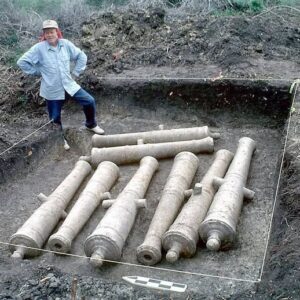The Viking Age was characterized by remarkable craftsmanship, particularly in the production of swords. Among these weapons, the Ulfberht sword stood out for its superior quality, attributed to the use of crucible steel. This high-carbon alloy, believed to have been acquired through trade with distant regions like India and Persia, set these swords apart from others of their time.
However, with the end of the Viking era, the knowledge and production of this advanced steel seemed to fade into obscurity in Europe. For nearly 800 years, the techniques and methods of creating crucible steel were lost, leaving a gap in the continent’s metallurgical history. It wasn’t until the 18th century that this exceptional steel resurfaced, coinciding with the advancements in modern steel production methods.

The disappearance of crucible steel from Europe for such a prolonged period remains a mystery in historical and metallurgical circles. The reintroduction of this material in the 18th century marked a significant milestone in the resurgence of high-quality steel production. The industrial revolution and innovations in metallurgy played a crucial role in bringing back the legacy of crucible steel after centuries of absence.
The reappearance of crucible steel in the 18th century revolutionized sword-making and metallurgy in Europe once again. The legacy of the Ulfberht swords and their exceptional quality paved the way for modern steel production techniques, shaping the future of the industry. The long-lost secrets of crafting crucible steel were rediscovered, allowing for the continuation of a tradition that had been lost for centuries.
In conclusion, the journey of crucible steel through history – from its prominence in the Viking Age to its disappearance and eventual resurgence in the 18th century – is a testament to the enduring legacy of exceptional craftsmanship and technological innovation. The Ulfberht swords serve as a symbol of this legacy, reflecting the intricate connections forged through trade and the enduring impact of superior metallurgical techniques.





